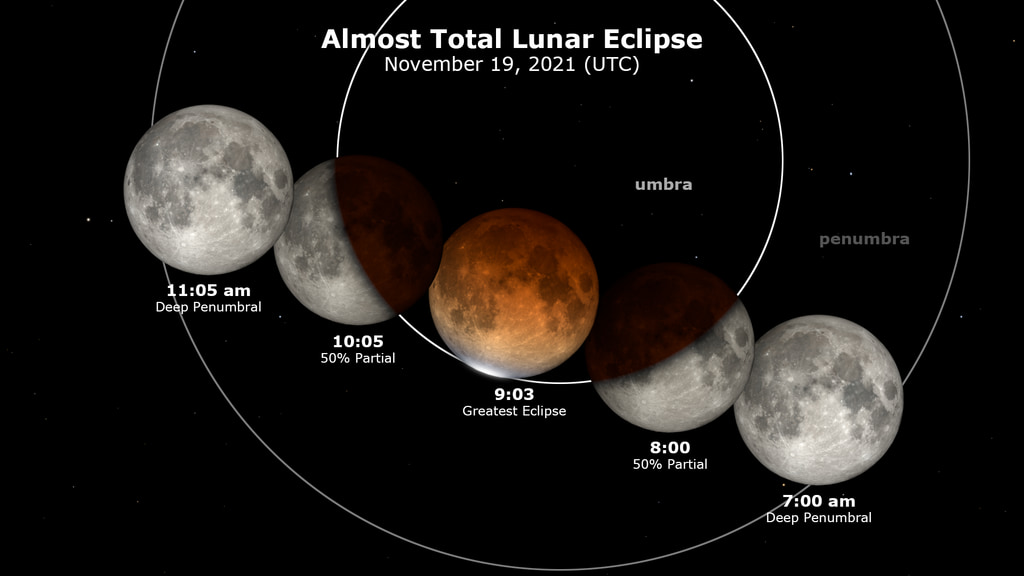Watch the entire Beaver Moon lunar eclipse in 1 minute time-lapse
It was the longest partial eclipse in 580 years.
An incredible timelapse video from Los Angeles captures the Beaver Moon during its dramatic partial eclipse Friday (Nov. 19).
Taken from the Griffith Observatory in Los Angeles, the video shows the moon gradually growing darker and then at its peak (which appears to be through haze), turning a slight red.
The Beaver Moon lunar eclipse saw the moon 97% covered by Earth's shadow at its peak at 4:02 am EST (9:02 GMT), and was potentially visible to millions of stargazers across North America, Central and South America, as well as parts of Australia, Europe and Asia.
Related: Check out the best binoculars deals for all your lunar-viewing.
Even though it wasn't a true "blood moon," or total eclipse, the moon was deep enough in the Earth's darker shadow (the umbra) and turned red due to the refraction of light in our planet's atmosphere.
But as you can see in the video, the red only was visible for part of the event. The full moon first entered Earth's penumbral (its outer, fainter shadow) at 1:02 am EST (6:02 GMT), and the umbral phase began about an hour and fifteen minutes later, when the moon started to noticeably darken at its southern limb.
If you're looking to photograph the moon or prepare for the next lunar eclipse, consider our best cameras for astrophotography and best lenses for astrophotography. You can also check out our guide on how to photograph a lunar eclipse, as well as how to photograph the moon with a camera.
Get the world’s most fascinating discoveries delivered straight to your inbox.
The next eclipse of the moon will be a total lunar eclipse on May 16, 2022. It will be best visible from South America and the U.S. and Canadian northeast.
Editor's Note: If you snap an amazing night sky picture and would like to share it with Space.com's readers, send your photos, comments, and your name and location to spacephotos@space.com.
Follow Elizabeth Howell on Twitter @howellspace. Follow us on Twitter @Spacedotcom and on Facebook.

Elizabeth Howell was staff reporter at Space.com between 2022 and 2024 and a regular contributor to Live Science and Space.com between 2012 and 2022. Elizabeth's reporting includes multiple exclusives with the White House, speaking several times with the International Space Station, witnessing five human spaceflight launches on two continents, flying parabolic, working inside a spacesuit, and participating in a simulated Mars mission. Her latest book, "Why Am I Taller?" (ECW Press, 2022) is co-written with astronaut Dave Williams.




